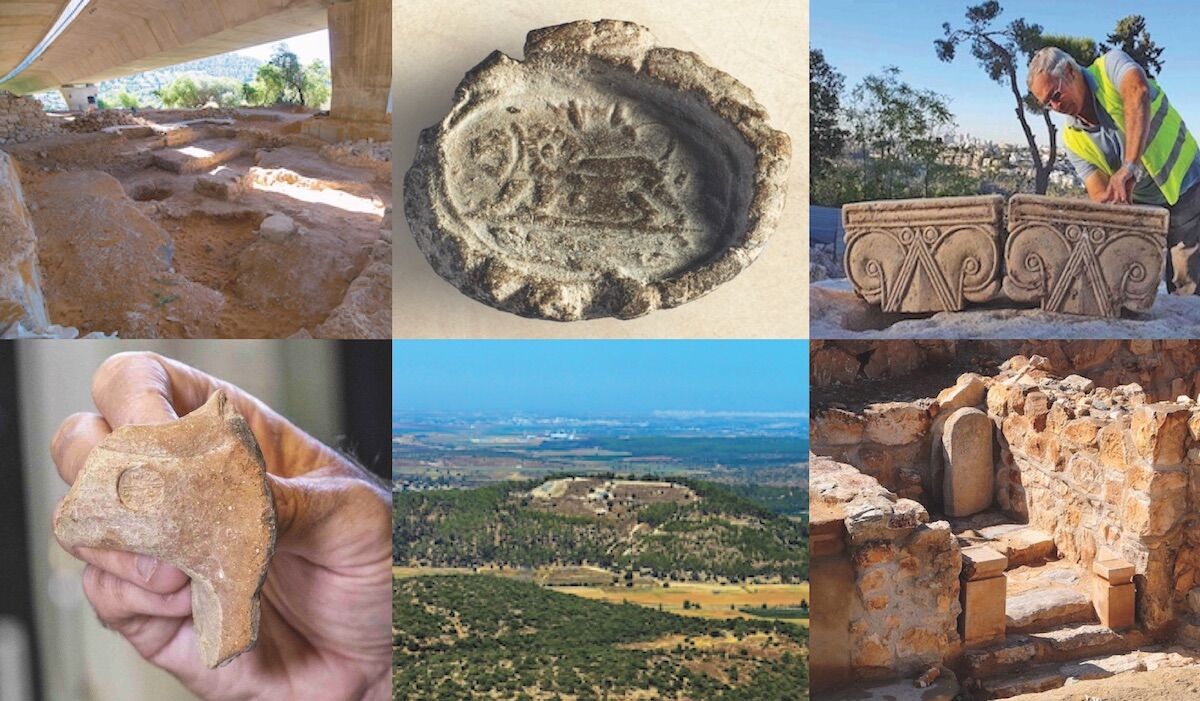10. Israel Border Inscription
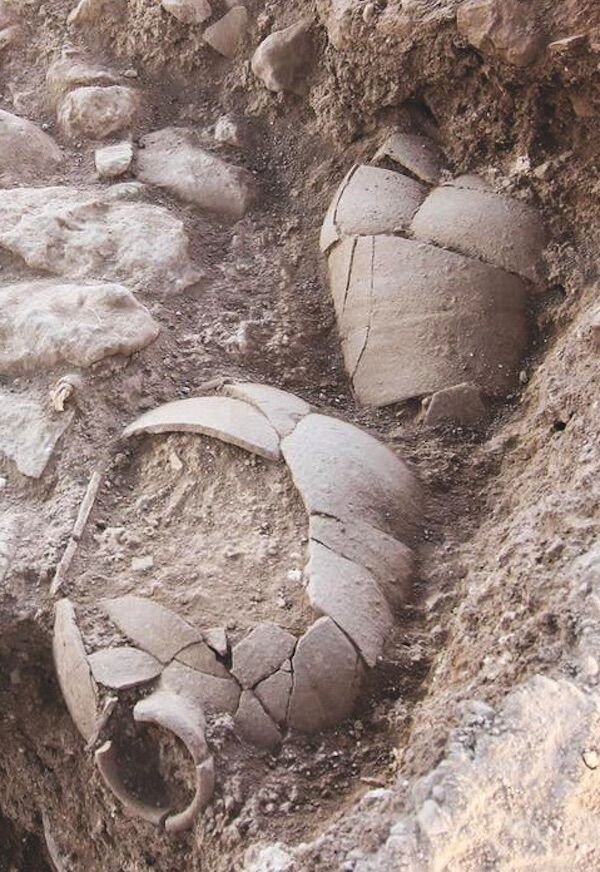
In January, a small pottery fragment (ostracon) inscribed “l’bnyw”—Belonging to Benayau—came to light from northern Israel. (The inscription was deciphered by Prof. Christopher Rollston from George Washington University.) While the discovery of a Hebrew inscription isn’t overly impressive, what is impressive is the findspot, together with the dating: Abel Beth Maacah, 10th–9th centuries b.c.e. Abel Beth Maacah is a town situated in the far northern extremity of modern-day Israel—a town so far north that many scholars assumed Israel was not powerful enough to control it until hundreds of years later.
The discovery fits with the biblical account, which describes a powerful 10th-century united kingdom of Israel extending far north during the reign of David (1 Chronicles 18). During this, Abel Beth Maacah is named a “mother in Israel” and the “inheritance of the Lord [Yahweh]” (2 Samuel 20:15-19). Even the mention of “Yahweh” in connection to the city fits well with the inscription, as “Benayau” is a name that includes the Yahweh theophoric element (-yau).
9. Tel Motza Temple
This 3,000-year-old temple, first discovered in 2012, continued to be uncovered by archaeologists on the outskirts of Jerusalem last winter. Inside the large courtyard complex, archaeologists uncovered an altar, idols and other religious ritual paraphernalia.
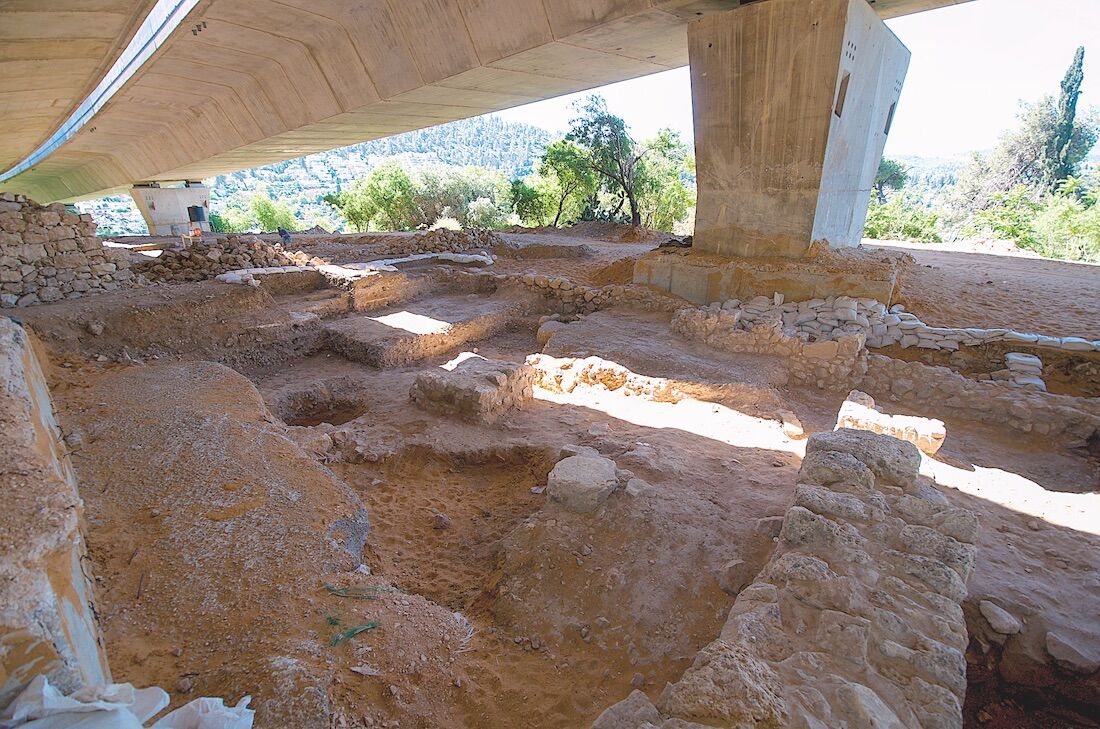
This discovery was characterized as evidence against the biblical account: The site showed that during the time of Solomon, temples to other gods were sanctioned and allowed to operate alongside and in close proximity to the temple in Jerusalem. Some claimed this refutes the biblical account of a monotheistic worship centered at Jerusalem.
Actually, the Tel Motza temple serves to confirm the biblical record. Passages like 1 Kings 11:7 show that King Solomon, under the influence of his many pagan wives, allowed the construction of pagan temples not only in the land, but also on the outskirts of Jerusalem. Further, the ninth-century dismantling of this temple fits with the period and biblical account of King Asa’s righteous reforms, during which he destroyed Judah’s pagan places of worship (2 Chronicles 14).
8. King Ahaz’s Cannabis Altar Worship
In 1963, two incense altars were discovered at a temple in Tel Arad. Last May, a new chemical analysis of the altars revealed that cannabis was burned as part of the ritual worship. This constitutes the first-ever discovery of drug use by the early Israelites.
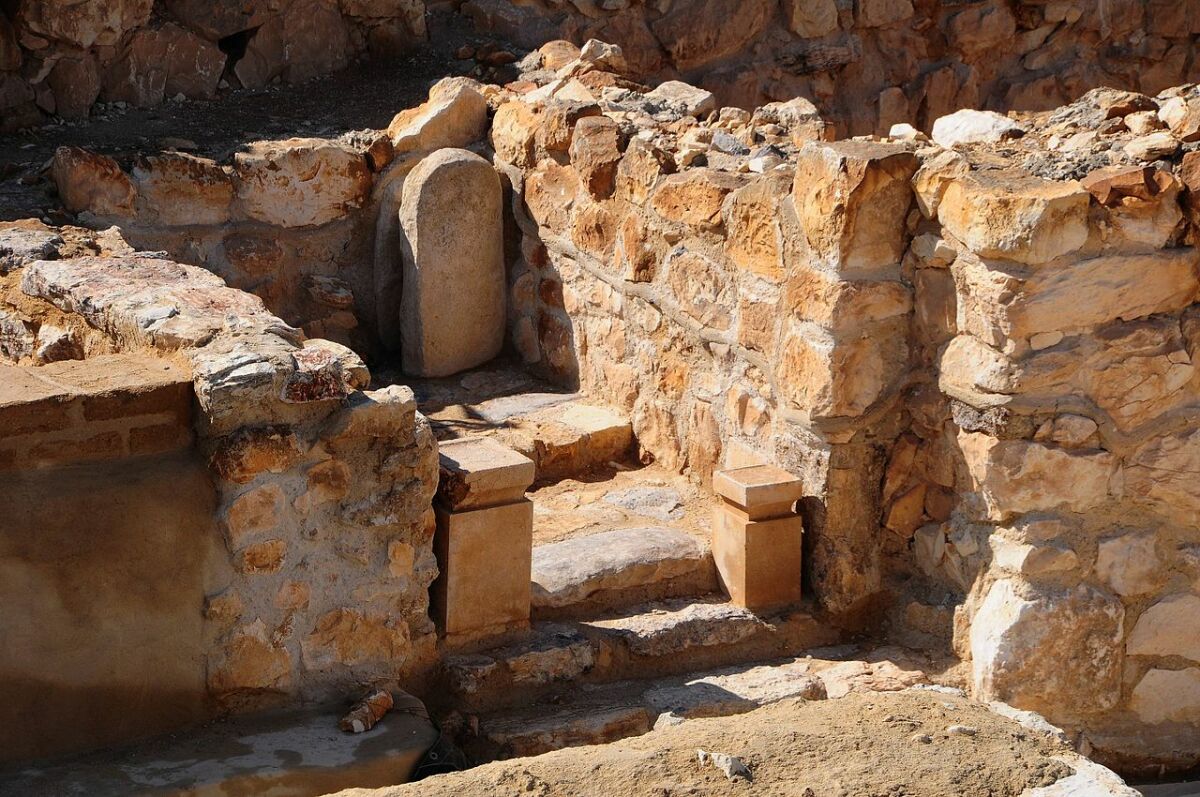
The Tel Arad altar use began around 735 b.c.e. and ended roughly a decade or two later. The discovery fits well with the biblical account of pagan King Ahaz (742–726 b.c.e.), a monarch the Bible connects especially with incense altars. “In every city of Judah he made high places to burn incense to other gods, provoking to anger the Lord, the God of his fathers” (2 Chronicles 28:25; Revised Standard Version).
Following Ahaz’s death, the righteous Hezekiah became king and demolished the high places and incense altars built by Ahaz (2 Kings 18:3-4; 2 Chronicles 30:14). The Tel Arad altars were found to have been deliberately buried on their sides, at the time of his reign (circa 715 b.c.e.).
7. Israelite Literacy
A study released in January analyzed the text of 39 inscriptions known as the “Samaria Ostraca.” These 2,800-year-old administrative documents, recording the receipt of wine and oil to Samaria over at least a six-year period, were revealed to have been written by the hand of only two scribes. This was interpreted to mean that ancient Israel had a low level of literacy.
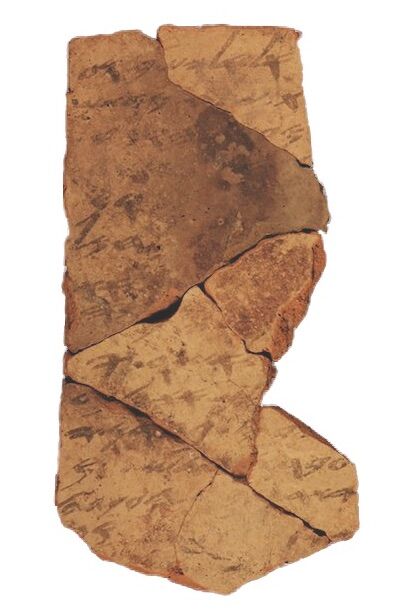
On the contrary, the study proves no such thing. The ostraca relate very specifically to the documentation of wine and oil coming into Samaria, evidently during the reign of King Jeroboam ii (2 Kings 14). They demonstrate the work of two “accountants,” not unlike today, tasked with recording this influx—hardly a reflection of the literacy of the entire populace.
Another “literacy” study released in September analyzed writing on 18 ostraca from Tel Arad dated to around 600 b.c.e., drawing a dramatically different conclusion. A team of archaeologists, mathematicians and a forensic writing detective concluded that at least 12 different hands penned the 18 “letters,” demonstrating a high level of literacy—all the more impressive, given that Tel Arad is a remote southern Judahite fortress. (Based on the ostraca content, even one of the low-level orderlies was literate.)
6. Tel Azekah Siege Ramp
In the summer, archaeologists excavating at Tel Azekah (near the ancient border with the Philistines) uncovered remains of a siege ramp used during the Assyrian invasion of Judah at the end of the eighth century b.c.e. The initially confusing mixture of Bronze Age and Iron Age remains were finally realized to be a ramp built from the remains of an existing outer Canaanite wall, used to create a 45-degree ramp up the side of the later, inner Judahite wall. Within the fill at the bottom of the ramp, the excavators unearthed two eighth-century b.c.e. Assyrian ritual chalices, similar to the type found on Assyrian reliefs.
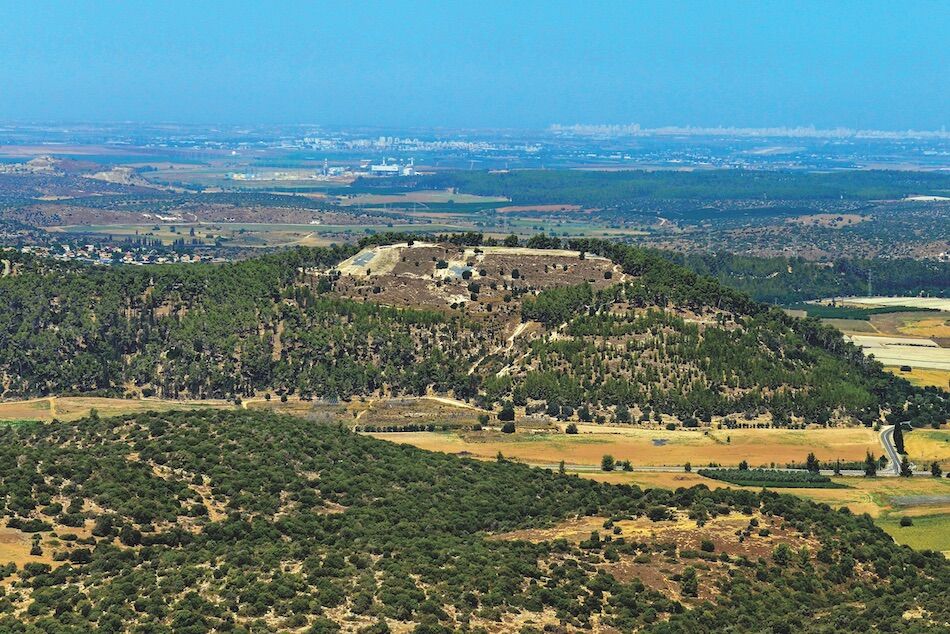
In his Azekah Inscription, King Sennacherib boasted of using beaten earth ramps and battering rams in his campaign against this fortress city.
These finds resurrect the history of Sennacherib’s invasion against King Hezekiah, as recorded in 2 Kings 18-19, 2 Chronicles 32 and Isaiah 36-37. The Assyrians began their assault by securing the coastal plain, meaning that Azekah was one of the first of the many cities to fall, after which came Lachish (where another Assyrian siege ramp has been uncovered).
5. Omri’s Royal Estate
At the start of the year, archaeologists discovered a monumental pillared building at Horvat Tevet, a site in the Jezreel Valley. The most prominent remains at the complex date to the ninth century b.c.e.
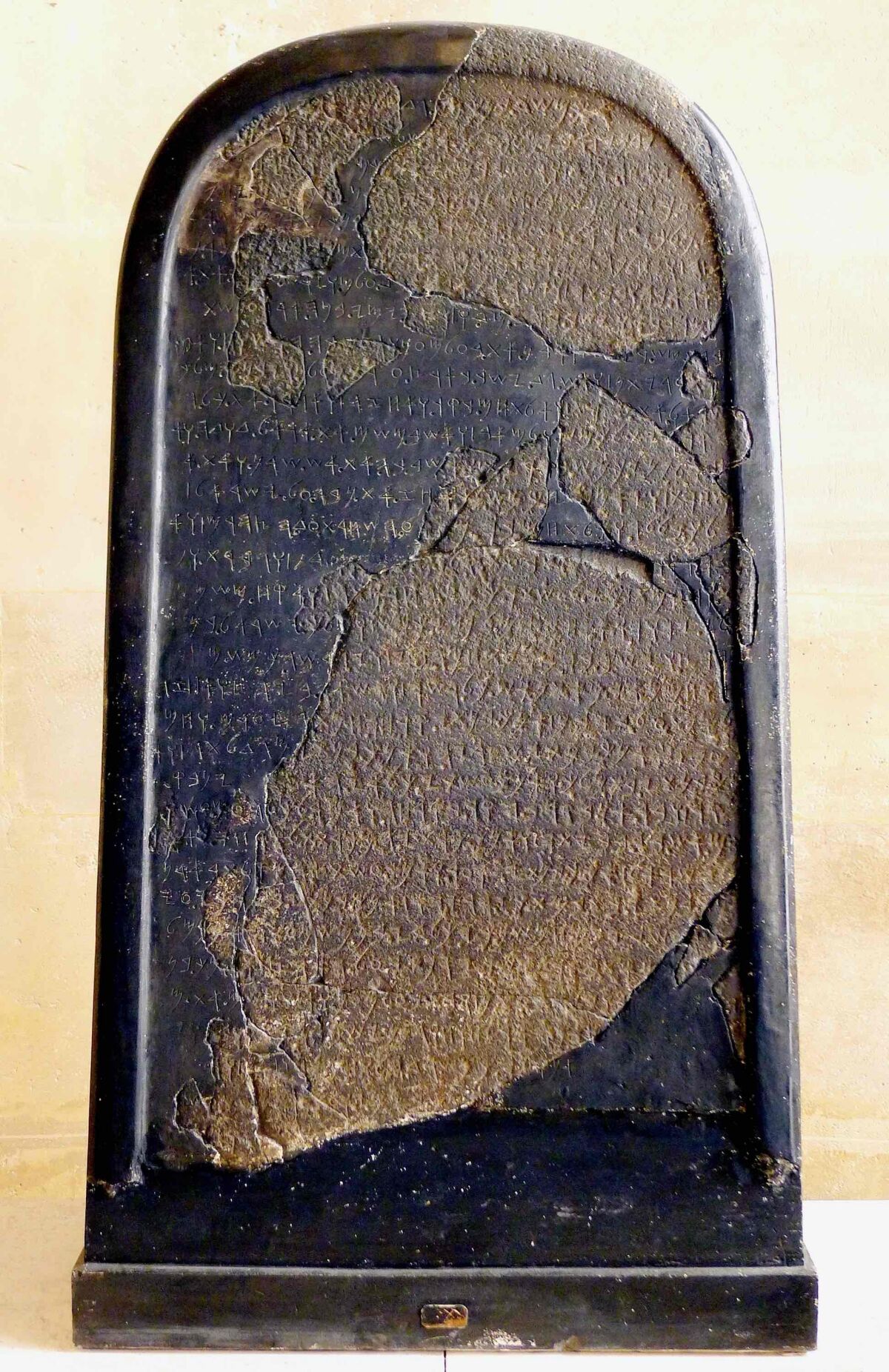
Archaeologists believe the complex served as a royal estate for Israelite officials to collect and redistribute agricultural products in the surrounding region. Measuring about 20 meters long and 30 meters wide, the main structure was partitioned into three sections: two entrance rooms at the sides, and a central hall with two rows of monolithic stone pillars preserved up to 2 meters tall (originally much higher).
This colossal structure attests to the large-scale building projects conducted by powerful Israelite kings Omri and Ahab (i.e. 1 Kings 16:24; 22:39). Horvat Tevet matches other Omride parallels found at sites such as Jezreel, Megiddo and Samaria.
4. Davidic-Era Geshurite Fortress
In November, a Geshurite fortress built at the time of King David’s reign was discovered near the Golan Heights town of Hispin. Built out of large basalt boulders, the walls of the fortress were 1.5 meters thick. One of the boulders near the building entrance bore an engraving of two horned gods with outstretched arms, apparently a local copy of the royal Geshurite moon-god.
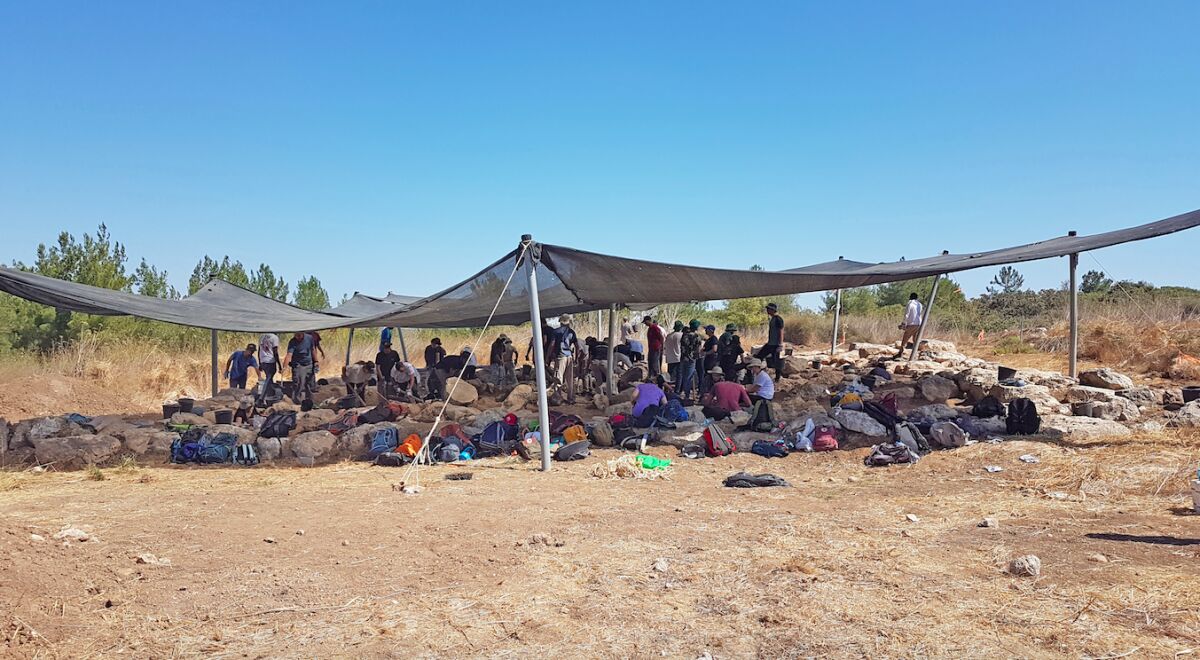
The biblical record details a league between King David and the kingdom of Geshur. 2 Samuel 3:3 says that David had “Maacah the daughter of Talmai king of Geshur” as his wife. Their son Absalom also fled to this location after murdering his half-brother Amnon. Based on the circa 1000 b.c.e. dating, the Hispin fortress may well have been constructed at the order of King Talmai himself.
3. Hezekiah’s Capitals
In September, archaeologists excavating at Jerusalem’s Armon HaNatziv promenade revealed a trove of ornately carved architectural elements from a grand royal building. Included were several dozen stone pieces, including the best-preserved proto-Aeolic pillar capitals ever discovered, and items from “lavish” window frames including ornate balustrades columns.
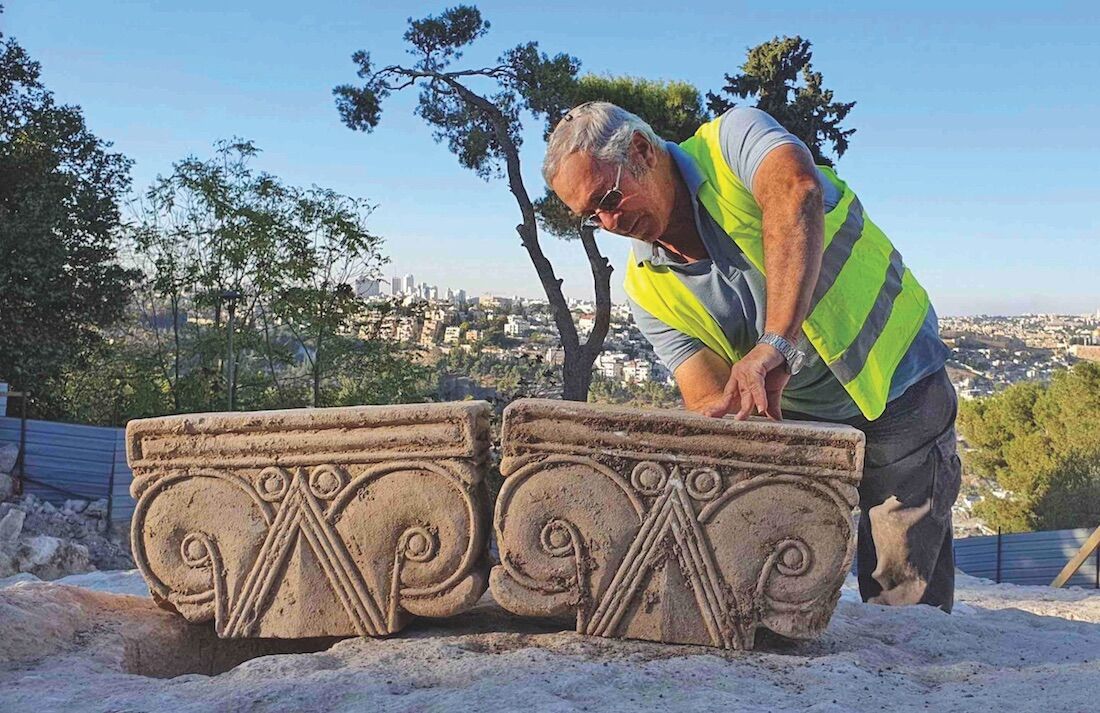
The building dates to the end of the eighth century b.c.e., following Sennacherib’s invasion of Judah. The Bible describes that following the siege, Hezekiah’s Judah experienced a period of rebuilding, growth and prosperity, with the construction of royal administration centers, storehouses and grand palatial buildings outside of Jerusalem’s walls (2 Chronicles 32:27-29).
2. 120 Seals and Hezekiah’s Administrative Building
Over the summer, archaeologists working at Arnona, Jerusalem unearthed a large administration storage center brimming with lmlk seals, personal seals, and other finds. The discoveries were dated to the late eighth-to-seventh century b.c.e. during the reigns of kings Hezekiah and Manasseh. More than 120 administrative seals were discovered, making this one of the largest and most important seal collections in Israel.
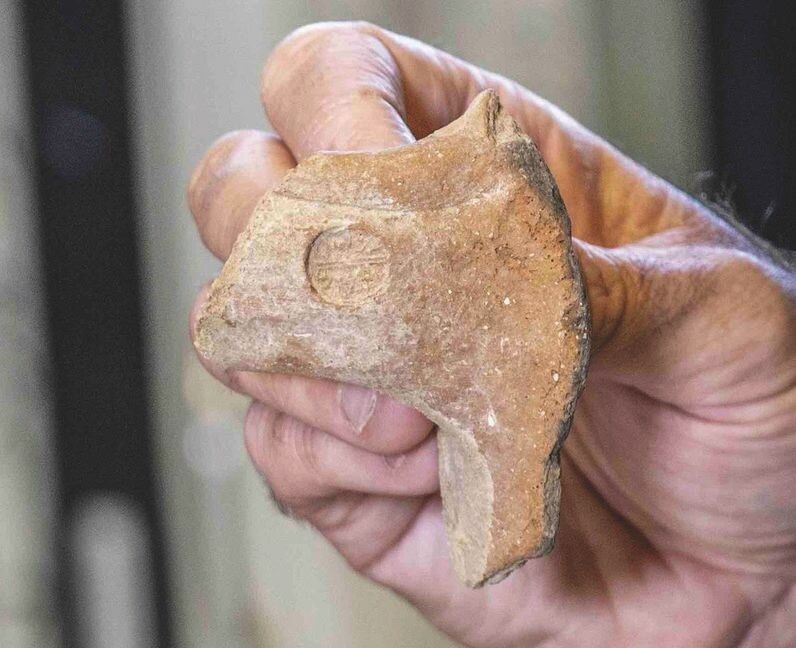
Most of the seals were of the “lmlk” variety. The word lmlk means “belonging to the king.” These seals, and the containers upon which they were stamped, evidently served some kind of administrative, taxation or tithing purpose. Besides these, many pottery handles were also stamped with the personal seals of high-ranking individuals, who are attested to on storage vessels elsewhere in Judah.
The building that contained the seals is unusually large and impressive, constructed out of hefty ashlar stones. As with the above discovery at Armon HaNatziv, this second Jerusalemite center attests to the rebuilding efforts and agricultural productivity following the Assyrian siege (2 Chronicles 32:27-29) and the strong, centralized and well-regulated nature of the Judahite kingdom.
1. Jeroboam Bulla
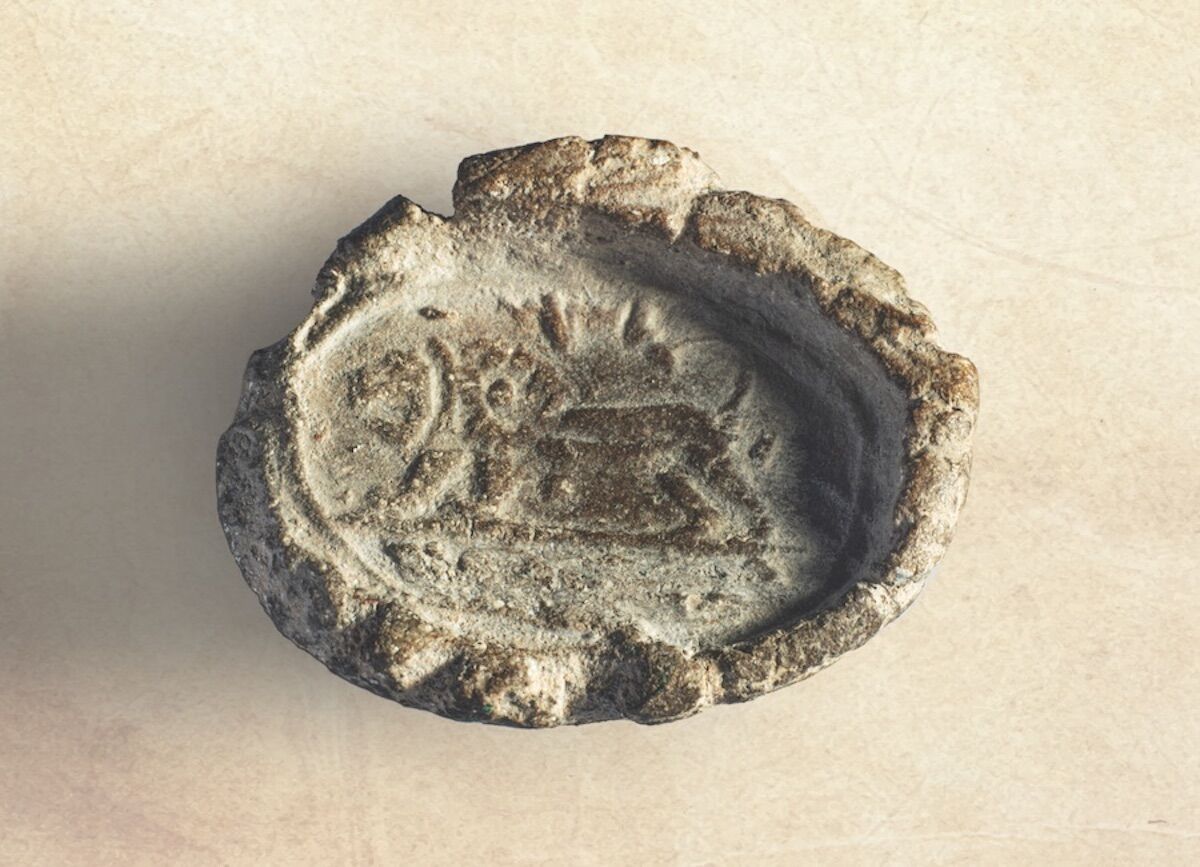
This bulla, bearing the name of Israelite King Jeroboam ii (2 Kings 14; Amos 7), was actually bought around 30 years ago from a Bedouin trader for a mere 10 shekels by a collector. Thought to be merely a clever forgery, it was kept tucked away up until five years ago, when the potential of the seal became known, and secret in-depth testing led by Prof. Yuval Goren began. The study’s findings, announced in December, revealed the authenticity of the bulla.
The clay seal depicts a roaring lion with the inscription: “Belonging to Shema, servant of Jeroboam.” This bulla parallels a seal stamp with the same inscription, dating to the eighth century b.c.e., discovered during excavations of Megiddo in 1904. (That seal, however, went missing in Constantinople over 100 years ago). The new bulla is thus the second artifact to confirm the existence of this enigmatic, longest-reigning ruler of the northern kingdom of Israel.
HONORABLE MENTIONS
There are a number of other discoveries from 2020 that deserve an honorable mention: A Canaanite Judges-era fortress discovered at Galon; 425 gold coins dating to the time of the Abbasid Caliphate found by a pair of teenagers in central Israel; a Zerubbabel-era administrative seal stamp from Jerusalem, as well as numerous fish bones pointing to Jerusalem’s “fish market”; “invisible” script from Ezekiel discovered on a Dead Sea Scroll fragment; an ancient Canaanite temple with Baal statues in southern Israel; rare Fatimid-era gold coins discovered in Jerusalem; an even rarer Bar Kochba Revolt coin bearing the name “Jerusalem,” discovered in the Old City; evidence from Italy that early mankind were “experts” with pitch, as the Bible attributes to Noah; and last but not least, huge 2,700-year-old reliefs of biblical Assyrian King Sargon ii discovered in Iraq.
We eagerly anticipate what 2021 will reveal!
